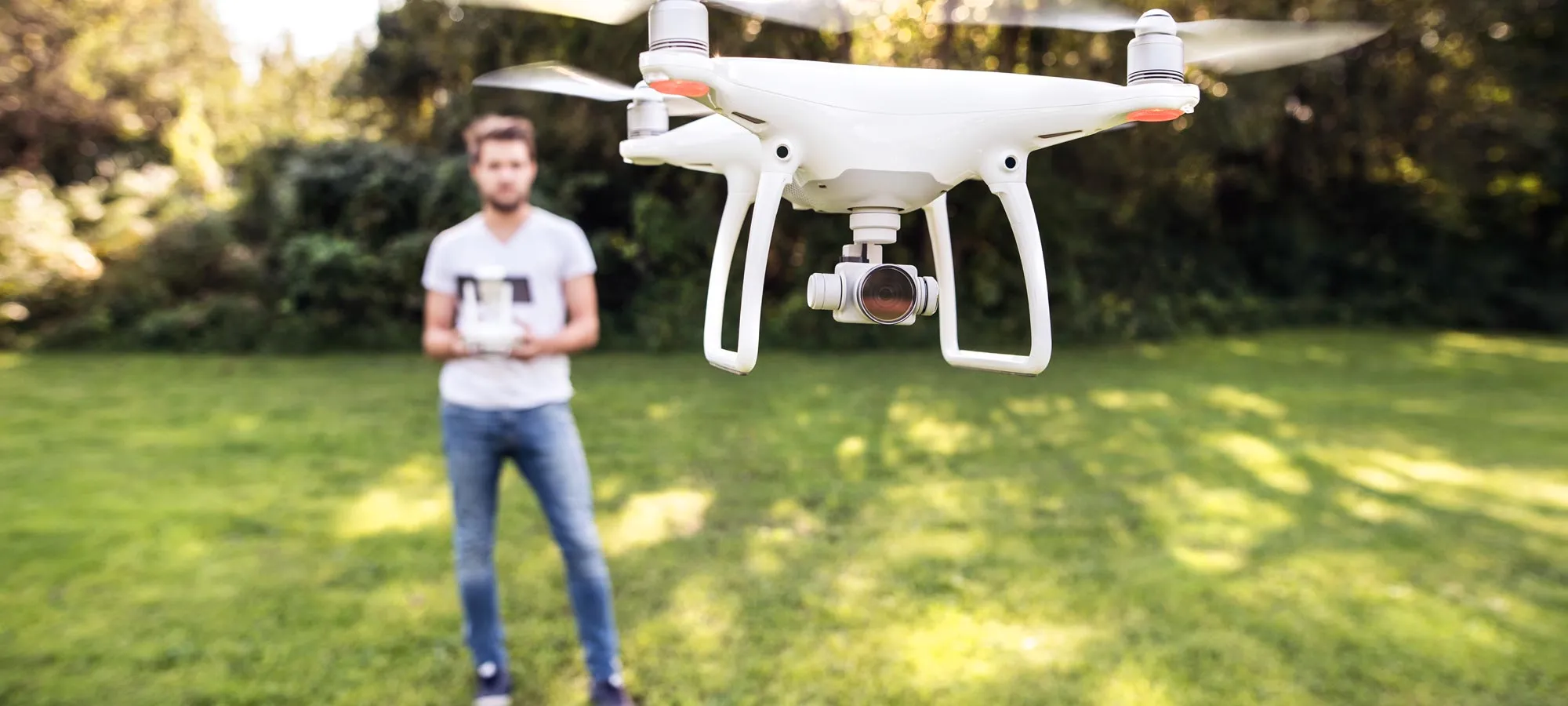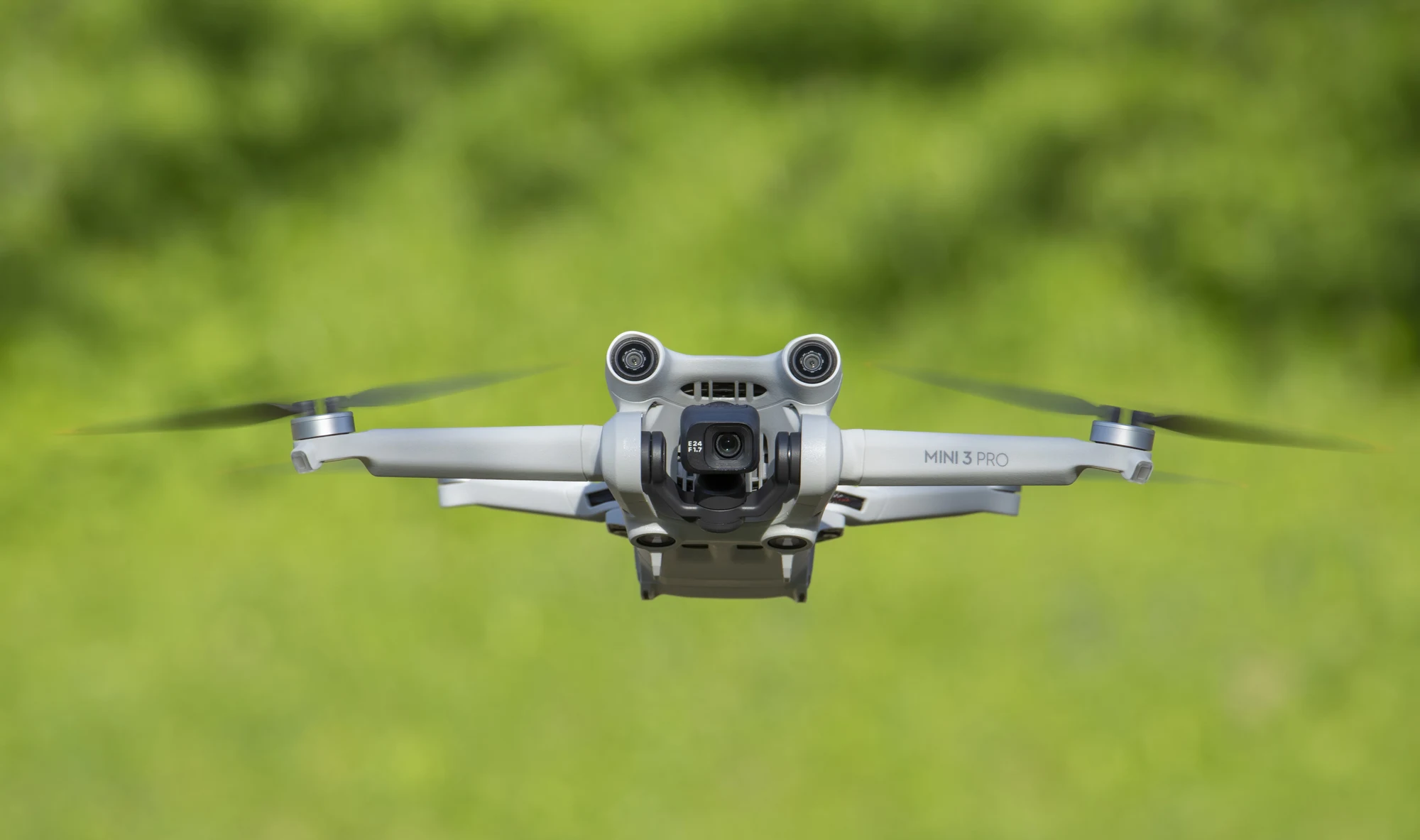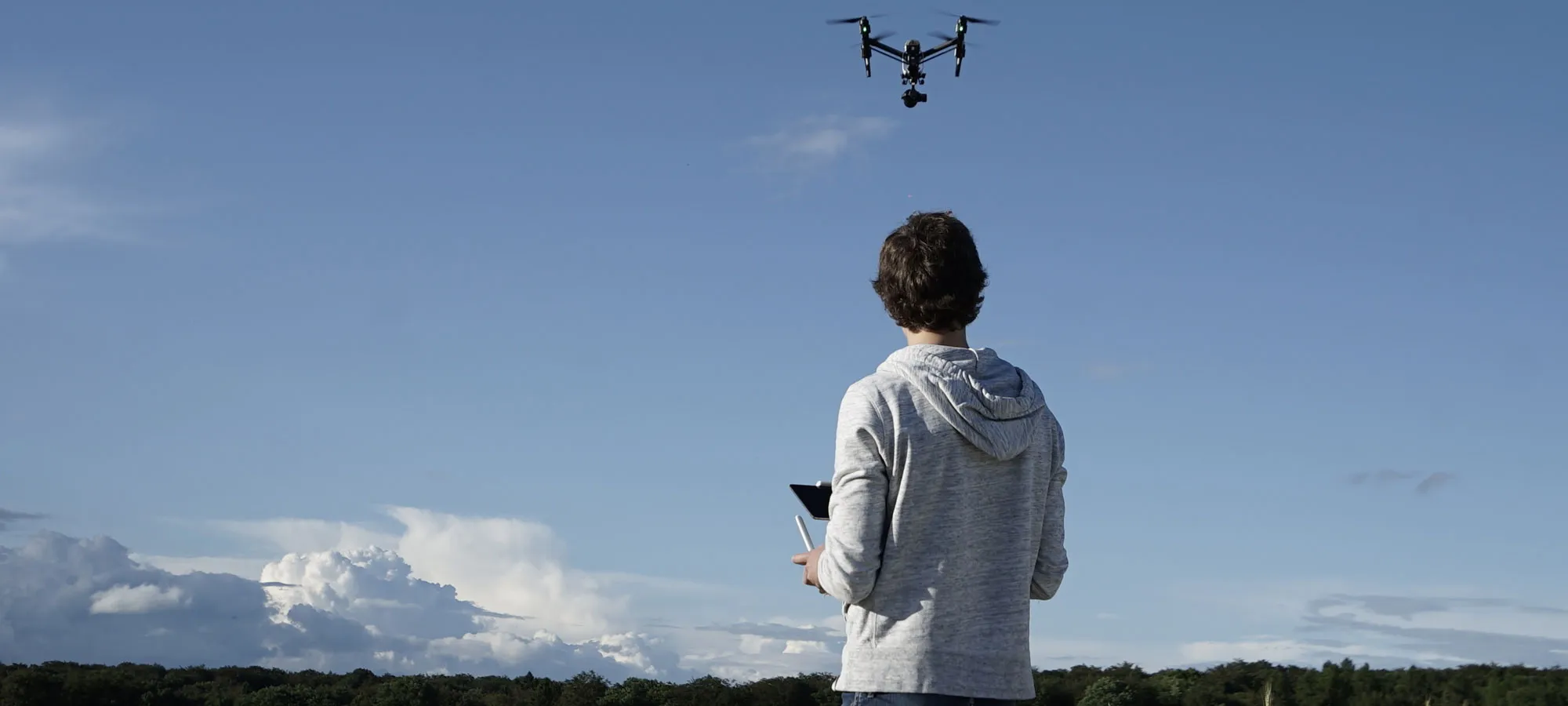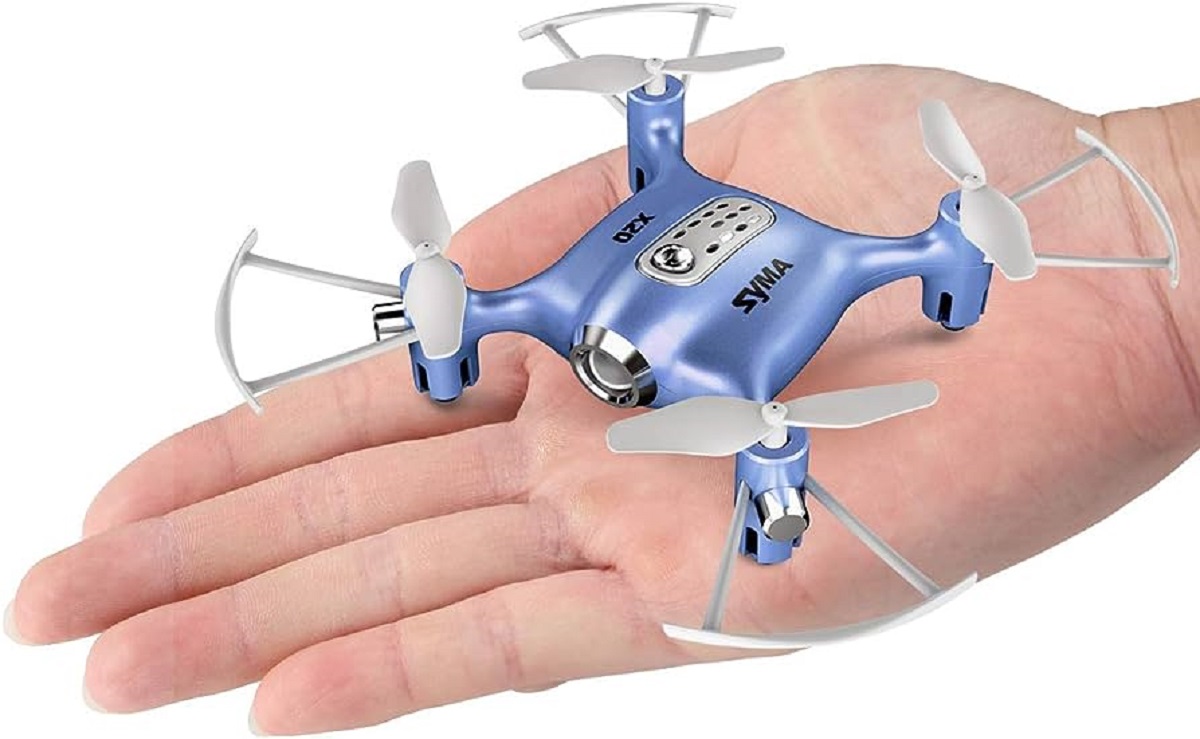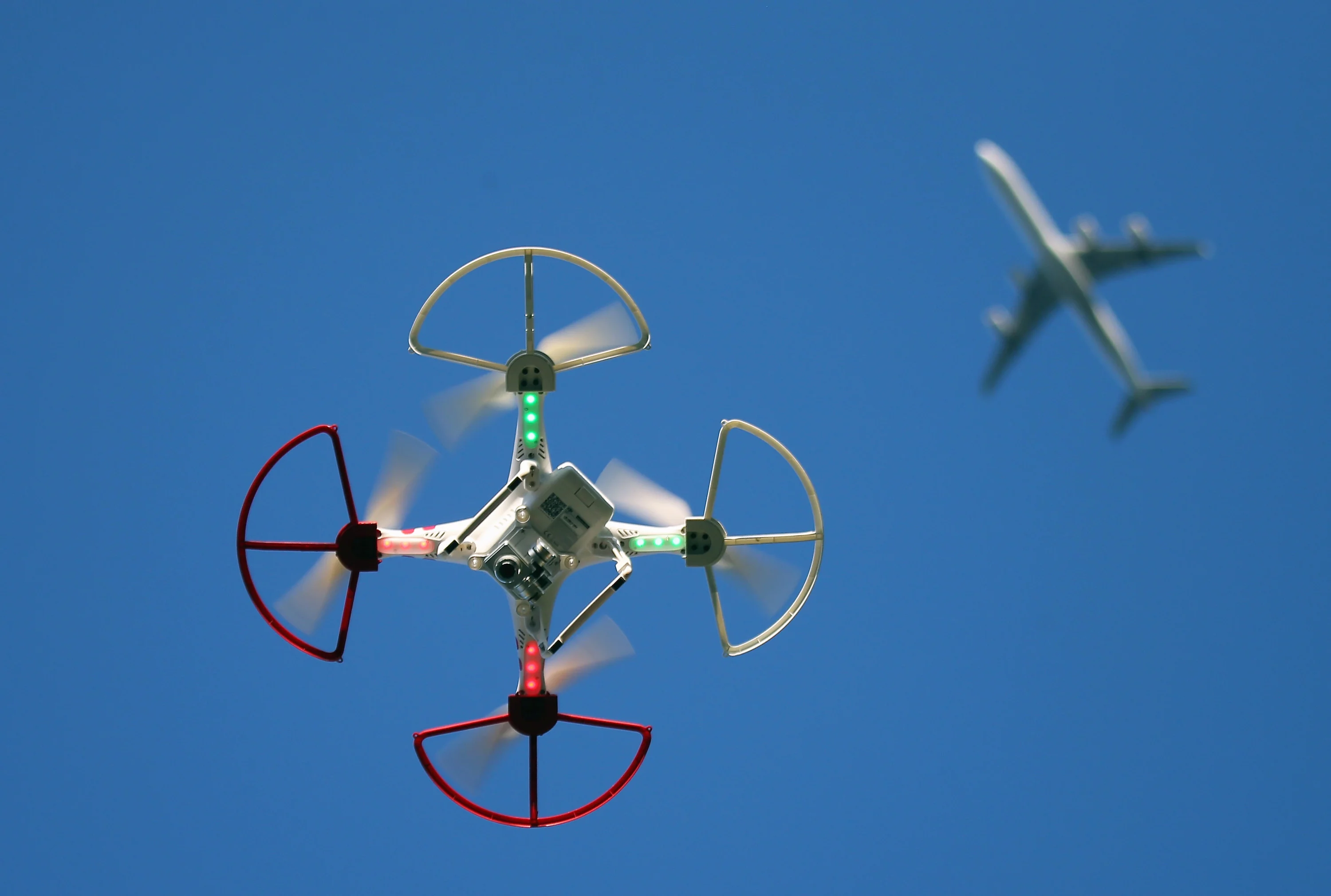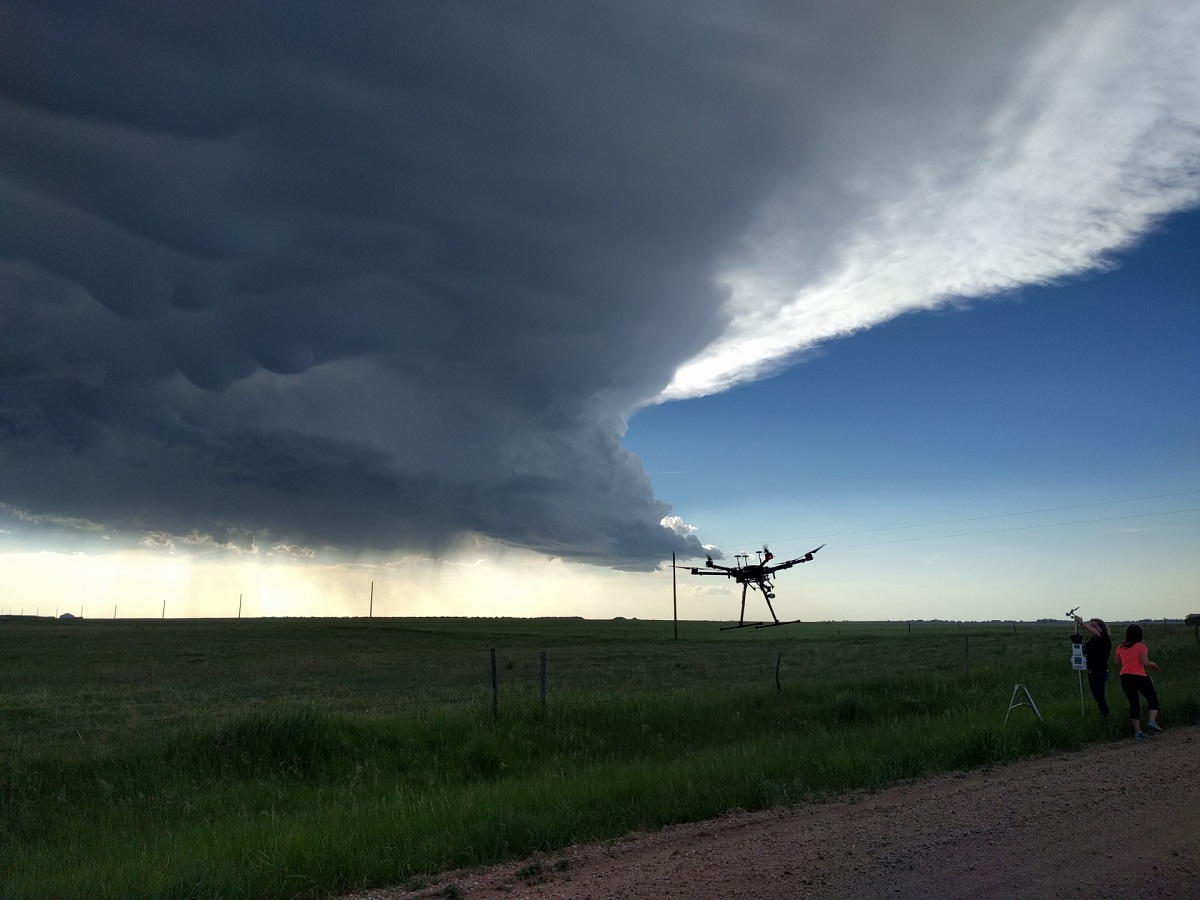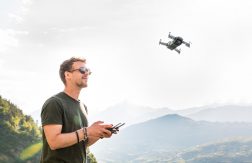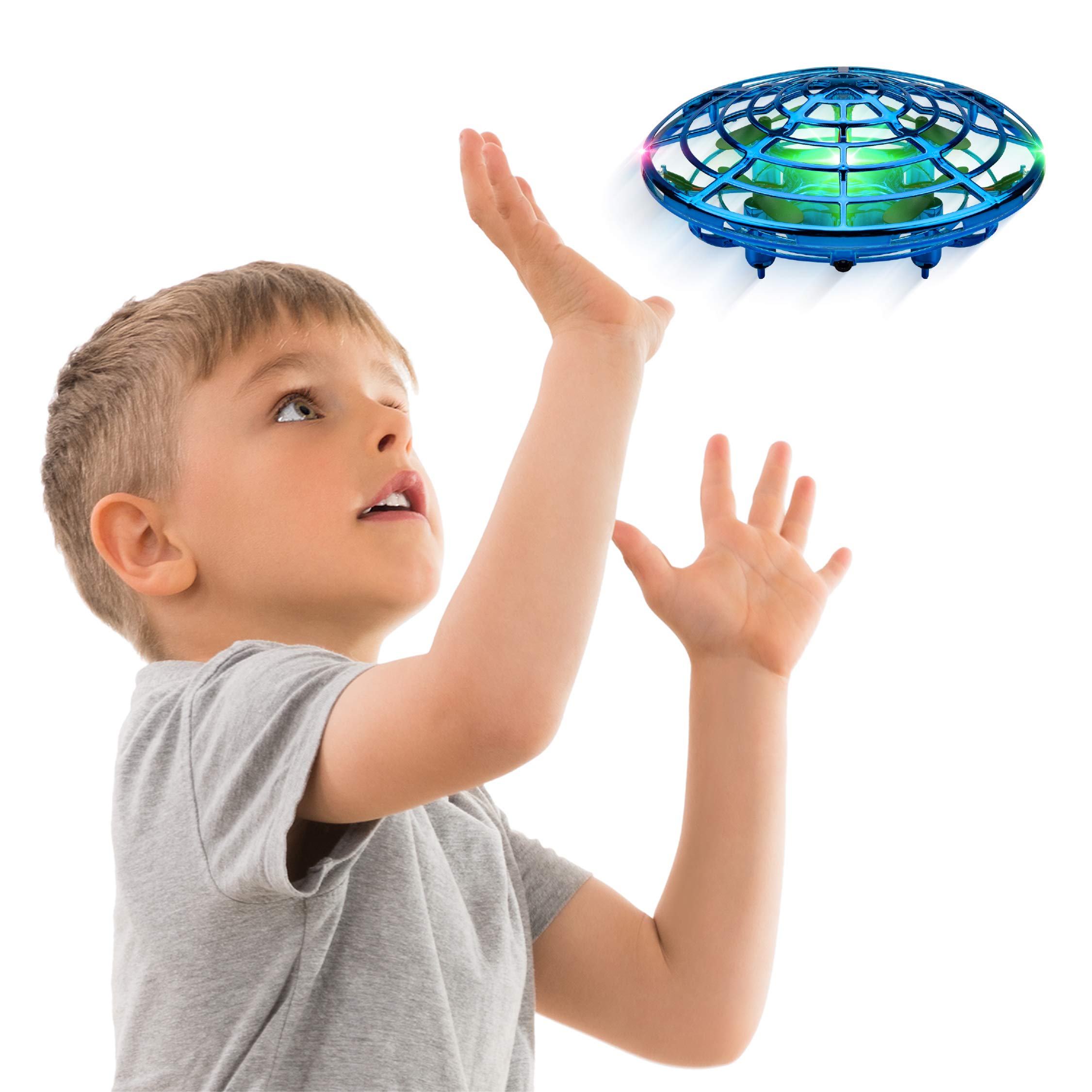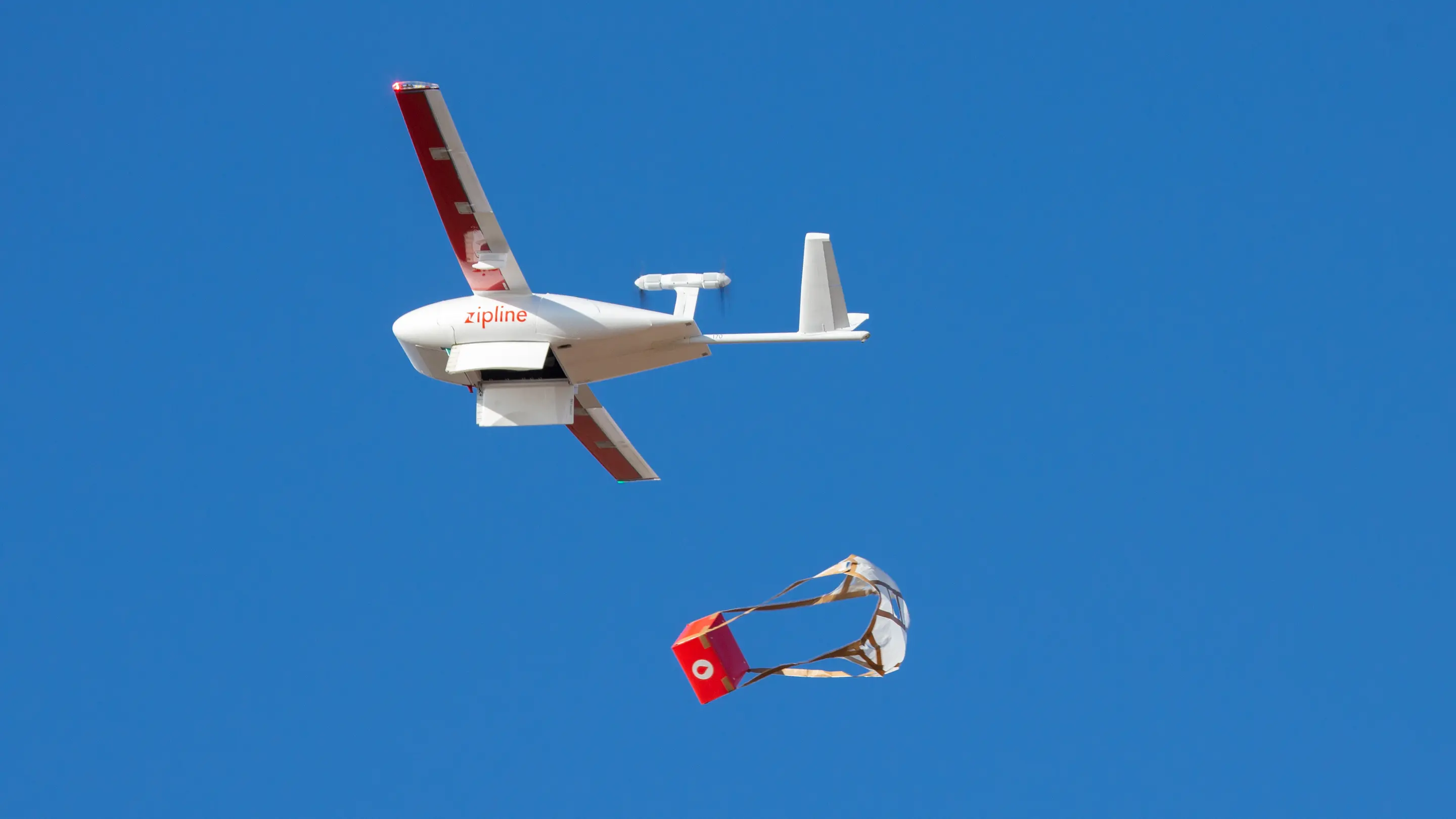Introduction
Welcome to the exciting world of drone flying! Drones have soared in popularity over the past few years, transforming the way we capture stunning aerial footage, explore new perspectives, and indulge in thrilling flight experiences. Whether you are a hobbyist looking to embrace this thrilling pastime or a professional seeking to incorporate drones into your work, this guide will provide you with the essential knowledge and skills to get started.
As with any new endeavor, it is important to approach drone flying with proper preparation and caution. Flying a drone requires not only technical know-how but also a keen sense of responsibility and adherence to safety guidelines. In this guide, we will cover everything from choosing the right drone to mastering flight maneuvers and capturing awe-inspiring footage.
Before we dive in, it’s worth noting that laws and regulations surrounding drone flying may vary from country to country. It is crucial to familiarize yourself with the rules and guidelines set forth by your local aviation authorities. By doing so, you can ensure a safe and legal flight experience for yourself and those around you.
Whether you’re envisioning epic cinematic shots or simply looking to have some fun, this guide will equip you with the necessary skills to take to the skies confidently. So, let’s waste no time and embark on this journey to unlocking the exhilarating world of drone flying.
Choosing the Right Drone
When it comes to choosing a drone, there are several factors to consider. The wide variety of models available can be overwhelming, but by understanding your needs and priorities, you can find the perfect drone to suit your requirements. Here are some key factors to keep in mind when selecting your drone:
- Purpose: Determine the primary purpose of your drone. Are you looking for a drone for aerial photography, videography, racing, or simply for recreational flying? Different drones cater to varying needs, so clarifying your purpose will help you narrow down your options.
- Budget: Set a budget for your drone purchase. Drones range in price from affordable entry-level models to high-end professional drones. It’s important to find a balance between your budget and the features you require.
- Flight Time and Range: Consider the flight time and range of the drone. Flight time refers to the duration the drone can stay in the air on a single battery charge. Range refers to the maximum distance the drone can travel from the controller. Longer flight time and range can provide greater flexibility and extended flight sessions.
- Camera Quality: If you’re interested in aerial photography or videography, pay close attention to the camera specifications of the drone. Look for models with high-resolution cameras, stabilization features, and the ability to shoot in different modes (such as RAW or 4K video).
- Size and Portability: Consider the size and portability of the drone. If you plan to travel frequently with your drone or have limited storage space, a compact and foldable design may be more convenient.
- Control System: Evaluate the control system of the drone. Some drones require more advanced piloting skills, while others offer intuitive and user-friendly controls suitable for beginners. Consider whether you prefer a remote control or a smartphone app as the primary control method.
Take your time to research and compare different drone models. Read reviews, watch video demonstrations, and seek recommendations from experienced drone users. By considering these factors and prioritizing what matters most to you, you can select a drone that aligns with your goals and provides an enjoyable flying experience.
Safety Precautions
Drone flying can be a thrilling experience, but it is essential to prioritize safety at all times. Safety precautions not only protect you and those around you but also ensure compliance with regulations and minimize the risk of accidents. Here are some key safety measures to follow when flying a drone:
- Know the Laws: Familiarize yourself with the local laws and regulations governing drone flying in your area. Understand where you can and cannot fly, altitude restrictions, and any permits or licenses required.
- Pre-flight Check: Always perform a pre-flight check of your drone before each flight. Inspect for any damage, loose parts, or malfunctions. Ensure that your batteries are charged and installed securely.
- Choose the Right Location: Fly your drone in open areas away from people, buildings, and other obstacles. Avoid restricted airspace such as airports and military installations. Be mindful of privacy and respect others’ personal space.
- Stay Within Line of Sight: Keep your drone within your line of sight at all times. Maintaining visual contact with your drone allows you to react quickly to any potential hazards and ensures safe navigation.
- Avoid Flying in Poor Weather Conditions: Refrain from flying your drone in strong winds, rain, snow, or foggy conditions. Adverse weather can affect your drone’s stability and control, increasing the risk of accidents.
- Keep Away from Wildlife: Avoid disturbing wildlife while flying your drone. Maintain a safe distance and minimize noise to prevent any negative impact on the environment and wildlife.
- Respect Airspace Restrictions: Be aware of any airspace restrictions in your vicinity, including no-fly zones, flying near airports, and other restricted areas. Use apps or online resources to check for restricted airspace before your flight.
- Practice Responsible Battery Management: Follow the manufacturer’s guidelines for battery safety and usage. Only use approved charging equipment and avoid overcharging or exposing batteries to extreme temperatures.
- Stay Updated on Firmware and Software: Regularly update your drone’s firmware and software to ensure optimal performance and safety. Manufacturers often release updates that address potential issues or improve flight stability.
- Take Drone Flying Lessons: If you are a beginner or unfamiliar with drone flying, consider taking lessons or seeking guidance from experienced drone pilots. Learning proper piloting techniques and flight maneuvers can enhance your safety and enjoyment.
By adhering to these safety precautions, you can maximize the fun and minimize the risks associated with drone flying. Remember, safety should always be your top priority, so take the necessary steps to ensure a safe and responsible flight experience.
Understanding the Controls
Before you take your drone to the skies, it is crucial to familiarize yourself with its controls. Understanding how to navigate and maneuver your drone will enhance your flying experience and ensure smooth and precise flights. Here are the essential controls you need to know:
- Throttle: The throttle control is responsible for regulating the drone’s altitude or vertical movement. Pushing the throttle up will increase the power and lift the drone higher, while pulling it down will decrease the power and descend the drone.
- Pitch and Roll: The pitch and roll controls allow you to control the drone’s forward/backward and left/right movement. By tilting the control stick forward or backward, you can make the drone move in the corresponding direction. Similarly, tilting the stick left or right will make the drone roll or yaw accordingly.
- Yaw: Yaw control allows you to rotate the drone either clockwise or counterclockwise. This control is essential for changing the drone’s orientation without changing its position in the sky. It helps you align the drone for capturing shots from different angles.
- Trim: Trim controls help you fine-tune the responsiveness and stability of the drone during flight. By adjusting the trim settings, you can counterbalance any drift or misalignment of the drone caused by external factors like wind.
- Return-to-Home (RTH) Button: Most drones are equipped with a Return-to-Home button, which automatically triggers the drone to fly back to its takeoff point. This feature is useful when you lose sight of the drone or encounter any unexpected issues.
- Mode Selection: Drones often come with different flight modes, such as Beginner, Intermediate, or Sport Mode. These modes adjust the drone’s responsiveness and flight characteristics, catering to different skill levels or flight preferences.
- Camera Controls: If your drone has an integrated camera, familiarize yourself with the camera controls. Learn how to adjust settings such as exposure, focus, and capturing modes to capture the best aerial shots.
- GPS and Flight Assistance Systems: Advanced drones come with GPS and flight assistance systems like obstacle avoidance and follow-me mode. Understand how these systems work and utilize them to enhance the safety and control of your flights.
Take the time to practice using these controls in a safe and open space before attempting complex maneuvers or flying in challenging environments. Understanding and mastering these controls will give you greater control and confidence when piloting your drone.
Basic Flight Techniques
Now that you have a grasp of the drone controls, it’s time to learn some basic flight techniques to improve your piloting skills. Mastering these techniques will allow you to navigate your drone with precision and confidence. Here are some fundamental flight techniques to practice:
- Takeoff and Landing: Start by mastering the takeoff and landing procedures. Ensure that the area is clear of obstacles, gently increase the throttle to lift off, and slowly reduce the throttle to land smoothly. Practice this in an open area to build your confidence.
- Hovering: Hovering is a fundamental skill that allows you to keep your drone in a fixed position in the air. Practice maintaining a stable hover by making small adjustments to the throttle and using the pitch and roll controls to counter any drift.
- Straight Line Flight: Practice flying your drone in a straight line, focusing on maintaining a consistent altitude and keeping the drone centered. Use gentle adjustments to the pitch and roll controls to ensure a smooth flight path.
- Turning: Learn to make smooth turns by using the yaw control. Start with small turns and gradually increase the angle as you become more comfortable. Remember to coordinate the yaw with the pitch and roll controls for controlled turning.
- Ascending and Descending: Practice ascending and descending your drone in a controlled manner. Experiment with different rates of ascent and descent, ensuring smooth transitions without losing control of the drone.
- Figure 8 Flying: Once you’re comfortable with basic flight maneuvers, try flying your drone in figure 8 patterns. This will help you practice coordinated movement and improve your spatial awareness.
- Obstacle Avoidance: Set up obstacles like cones or markers and practice maneuvering your drone around them. This will improve your agility and help you develop the ability to navigate through tight spaces.
- Maintaining Orientation: Pay close attention to the drone’s orientation during flight. Practice keeping the drone facing forward, as it can be disorienting when the drone changes direction while you’re looking at the live video feed or using FPV goggles.
- Gradually Increase Difficulty: As you gain confidence and proficiency, gradually increase the difficulty of your flight maneuvers. Experiment with faster flying speeds, sharper turns, and more complex flight paths.
Remember to always fly within your skill level and comfort zone. Practice these techniques in open spaces away from obstacles and people until you feel confident in executing them. Regular practice and gradual progression will help you become a skilled drone pilot.
Advanced Flight Maneuvers
Once you have mastered the basic flight techniques, it’s time to elevate your drone piloting skills with some advanced flight maneuvers. These maneuvers will allow you to perform impressive aerial stunts, capture unique shots, and push the limits of your drone’s capabilities. Here are some exciting maneuvers to practice:
- Improve Control in Wind: Flying in windy conditions can be challenging. Practice maintaining stability and control by adjusting the throttle, pitch, and roll controls to counter the effects of the wind. Gradually increase your confidence in flying in different wind speeds.
- Full 360° Turns: Perform smooth and precise 360° turns by smoothly maneuvering the yaw control. Keep the drone centered during the rotation to maintain control and stability.
- Power Slides: Execute power slides by quickly applying pitch and roll inputs in opposite directions. This maneuver creates a sideways sliding motion and adds a dynamic element to your flights.
- Flips and Rolls: Some drones are capable of performing flips and rolls. Practice executing flips by quickly pushing the pitch or roll controls in the desired direction while simultaneously applying full throttle. Mastering this maneuver adds excitement and creativity to your flights.
- Inverted Flying: For more advanced pilots, flying your drone upside down or inverted can be a thrilling maneuver. Practice maintaining control while the drone is inverted, and gradually get comfortable with flying in this unconventional position.
- Orbiting: Perform an orbiting maneuver by circling a fixed point of interest. Adjust the yaw and radius of your orbit to create beautiful shots and captivating videos. Be mindful of your surroundings and maintain visual contact with your drone at all times.
- Low-altitude Flights: Fly your drone close to the ground to capture unique perspectives. Practice flying at low altitudes while maintaining control, avoiding any potential obstacles, and ensuring safe piloting techniques.
- Nose-in and Tail-in Flying: Challenge yourself by flying your drone with the nose or tail facing towards you. This maneuver requires adjusting your control inputs based on the drone’s orientation, improving your spatial awareness and piloting skills.
- Complex Flight Paths: Combine multiple flight maneuvers to create complex flight paths. Mix straight lines, turns, flips, and rolls to add spectacle and creativity to your flights. Plan and execute these maneuvers carefully to ensure smooth transitions and precise control.
- Follow Me Mode: If your drone has a Follow Me mode, practice using this feature. The drone will autonomously follow your movements, allowing you to capture dynamic footage while keeping your focus on the action.
Always prioritize safety and start with slow and controlled maneuvers. Gradually increase the difficulty and speed as you gain confidence and proficiency. Remember to fly in open areas away from people and obstacles, and be aware of the battery life and flight time limitations of your drone.
By practicing these advanced flight maneuvers, you will unlock the full potential of your drone and capture stunning footage that will impress both yourself and others.
Using the Camera and Capturing Footage
One of the most exciting aspects of flying a drone is the ability to capture breathtaking aerial footage. Whether you’re a hobbyist or a professional, understanding how to utilize your drone’s camera will take your drone flying experience to the next level. Here are some tips for using the camera and capturing stunning footage:
- Camera Settings: Familiarize yourself with the camera settings of your drone. Adjust parameters such as resolution, frame rate, and white balance to suit your specific shooting requirements.
- Stabilization Techniques: To achieve smooth and stable footage, utilize any built-in stabilization features of the drone’s camera. Experiment with different modes like gimbal stabilization to minimize camera shake and vibrations.
- Composition and Framing: Take advantage of the unique perspective provided by your drone. Experiment with different angles, heights, and framing techniques to capture visually captivating shots. Follow the rule of thirds and pay attention to leading lines and points of interest.
- Use Manual Camera Control: If possible, practice using manual camera control options like adjusting aperture, shutter speed, and ISO. This will allow you to have more control over the exposure and create the desired visual effects.
- Fly Slow and Smooth: When capturing footage, fly your drone slow and steady. Smooth and controlled movements can result in cinematic and professional-looking shots. Avoid sudden jerky movements that can spoil the overall footage.
- Experiment with Camera Angles: Don’t limit yourself to shooting from straight overhead. Try experimenting with different camera angles and perspectives, such as low-angle shots for a dramatic effect or high-angle shots for a unique vantage point.
- Utilize Intelligent Flight Modes: Many drones come equipped with intelligent flight modes like ActiveTrack or Waypoints. These modes allow you to automate specific flight paths or track moving subjects, making it easier to capture dynamic footage.
- Adjust Exposure Compensation: In challenging lighting situations, use exposure compensation to regulate the exposure levels. This will help you achieve balanced and well-exposed footage.
- Shoot in RAW Format: If possible, shoot in RAW format instead of JPEG. RAW files contain more image data and give you greater flexibility during post-processing to fine-tune the colors, exposure, and other parameters.
- Edit and Enhance Footage: Once you’ve captured the footage, enhance it through post-processing. Use video editing software to trim clips, add transitions, apply color correction, and add music or voiceovers to create a polished final product.
Remember, practice makes perfect. Experiment with different techniques and learn from the footage you capture. Watch tutorials and study the work of experienced drone videographers to get inspiration for new ideas and techniques.
Lastly, respect privacy and local regulations when capturing footage. Be mindful of people’s personal space and avoid flying over restricted or private areas.
By mastering the art of using your drone’s camera and capturing stunning footage, you can create impressive visual content that will leave viewers in awe.
Troubleshooting Common Issues
While flying a drone is an exciting experience, it can sometimes come with its fair share of challenges. Understanding how to troubleshoot common issues that may arise during your drone flights will help you overcome obstacles and ensure a smooth flying experience. Here are some common issues you may encounter and how to troubleshoot them:
- Loss of Signal: If you experience a loss of signal between your drone and the remote controller, first check the battery level of both the drone and the controller. Also, ensure that you are within the recommended range for your drone’s transmission distance. If the issue persists, try recalibrating the connection or relocating to an area with a stronger signal.
- Drifting or Inaccuracy: If your drone drifts or fails to maintain its position accurately, calibrate the compass, gyroscope, and accelerometer. Also, check for any physical obstructions or interference that may affect the drone’s stability.
- Battery Issues: Monitor your drone’s battery levels during flight to prevent it from running out of power mid-flight. If you notice abnormal battery behavior or reduced flight time, check for any signs of damage or deterioration. Follow the manufacturer’s guidelines for battery maintenance, such as avoiding overcharging or exposing batteries to extreme temperatures.
- GPS Signal Problems: If your drone relies on GPS for stability and navigation, ensure that you have a strong GPS signal before takeoff. Avoid flying in areas where GPS signal is weak or obstructed by tall buildings or dense vegetation.
- Propeller Issues: Inspect the propellers for damage or signs of wear before each flight. Loose or damaged propellers can affect the drone’s stability and flight performance. Replace any damaged propellers and ensure they are securely attached.
- Camera Malfunction: If you encounter issues with the drone’s camera, make sure it is properly connected and the settings are configured correctly. Restarting the drone and its associated app or firmware updates may resolve camera malfunctions. If the problem persists, contact the manufacturer for further assistance.
- Flight Control System Errors: Occasionally, you may encounter error messages or flight control system malfunctions. Refer to the drone’s user manual or the manufacturer’s support resources to troubleshoot and resolve any reported errors. Ensure that you have the latest firmware installed and consider resetting the drone to factory settings as a last resort.
- Unresponsive Controls: If you experience unresponsive controls, check the connection between the remote controller and the drone. Make sure the control sticks are calibrated correctly. If the issue persists, try restarting the system and recalibrating the controls.
When troubleshooting any issues, ensure that you are well-informed about your specific drone model and its troubleshooting procedures. Regularly update the firmware and software of your drone, as manufacturers often release updates to address known issues and improve flight stability.
Remember to prioritize safety and exercise caution when attempting to resolve any problems. If you encounter persistent issues or are unsure about how to resolve them, reach out to the manufacturer’s customer support or consult with experienced drone pilots for assistance.
By being prepared and equipped with troubleshooting knowledge, you can quickly address any challenges that arise during your drone flights and continue enjoying the exhilarating experience of flying.
Tips for Flying Responsibly and Legally
As a drone pilot, it is important to fly responsibly and within the bounds of the law. By adhering to regulations and practicing responsible drone flying, you can help ensure the safety of others, protect privacy, and maintain the positive reputation of the drone community. Here are some essential tips to fly responsibly and legally:
- Know and Follow Local Laws: Familiarize yourself with the laws and regulations governing drone flight in your area. Understand where you can and cannot fly, altitude restrictions, and any permits or licenses required. Stay updated on any changes or updates to these laws.
- Respect Privacy: Avoid flying over private property or areas where people have a reasonable expectation of privacy. Be mindful of capturing footage that may infringe on someone’s privacy rights. Always obtain necessary permissions when shooting in public or private spaces.
- Keep Your Drone in Sight: Maintain visual contact with your drone at all times. This will enable you to react quickly to any obstacles or potential dangers. Flying beyond your line of sight increases the risk of accidents and violates regulations in many jurisdictions.
- Avoid Flying in Restricted Areas: Steer clear of restricted airspace, such as airports, military installations, national parks, and wildlife sanctuaries. Consult reliable resources, apps, or maps to identify no-fly zones and respect the designated boundaries.
- Be Mindful of Other Aircraft: Be aware of other aircraft in the airspace, including manned aircraft, helicopters, and other drones. Give right of way to manned aircraft and maintain a safe distance to avoid any potential collisions.
- Fly in Suitable Weather Conditions: Avoid flying your drone in inclement weather conditions such as rain, strong winds, or fog. Such weather can impact the stability and control of your drone, increasing the risk of accidents.
- Be Proactive in Emergency Situations: Familiarize yourself with the emergency procedures for your drone. If an emergency occurs during flight, such as a loss of control or a battery failure, act quickly and decisively to minimize any potential risks to people or property.
- Respect Wildlife and the Environment: Avoid disturbing wildlife and natural habitats when flying your drone. Maintain a safe distance from animals and adhere to any local regulations protecting wildlife and ecosystem areas.
- Consider Noise Levels: Be conscious of the noise generated by your drone, particularly in residential areas or natural environments. Minimize disturbance to others by flying at reasonable times and using quieter flight modes when available.
- Stay Informed and Educated: Continuously educate yourself about drones, their technology, and flight regulations. Stay updated on any changes or developments in the drone community. Consider joining drone pilot associations or online forums to exchange knowledge and learn from other experienced pilots.
By adhering to these tips, you not only fly legally and responsibly but also contribute to the positive perception of drones and their users. Remember that as a drone pilot, you are an ambassador for the drone community, so it is crucial to set a good example and embrace responsible flying practices.
Always prioritize safety, respect the privacy and rights of others, and enjoy the incredible experience of flying your drone responsibly and within the boundaries of the law.
Conclusion
Congratulations! You have successfully completed our comprehensive guide to flying a drone. We have covered everything from choosing the right drone to understanding the controls, mastering flight techniques, capturing stunning footage, and flying responsibly. By following the tips and techniques outlined in this guide, you are well on your way to becoming a skilled and responsible drone pilot.
Remember, drone flying is a thrilling experience that comes with great responsibility. Always prioritize safety by adhering to local laws and regulations, maintaining visual contact with your drone, and flying in appropriate weather conditions. Respect the privacy of others, avoid restricted areas, and be considerate of wildlife and the environment. By flying responsibly, you contribute to the positive image of the drone community and ensure a safe and enjoyable experience for everyone.
Continuous learning and practice are key to becoming an expert drone pilot. Stay informed about the latest drone technologies, updates, and flight regulations. Engage with other drone enthusiasts, join online communities, and participate in relevant courses or workshops to further develop your skills.
Lastly, embrace the creativity and limitless possibilities that come with capturing aerial footage. Use your drone to explore new perspectives, tell compelling stories, and capture stunning imagery. Remember that great footage is not just about technical skills but also about showcasing your unique artistic vision.
Now, it’s time to take your drone to the skies, create epic moments, and share your experiences with others. Fly responsibly, respect the rules, and let your creativity soar!







